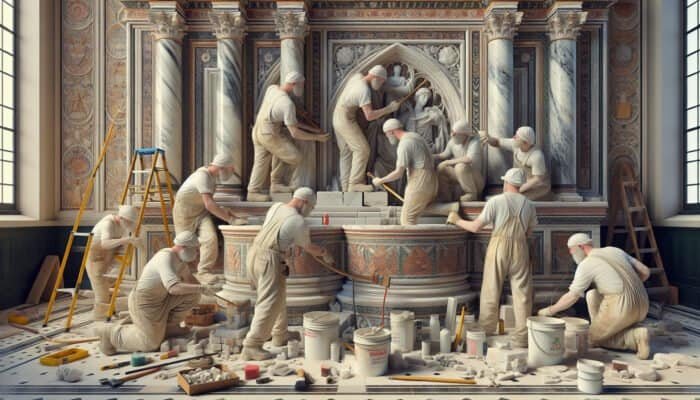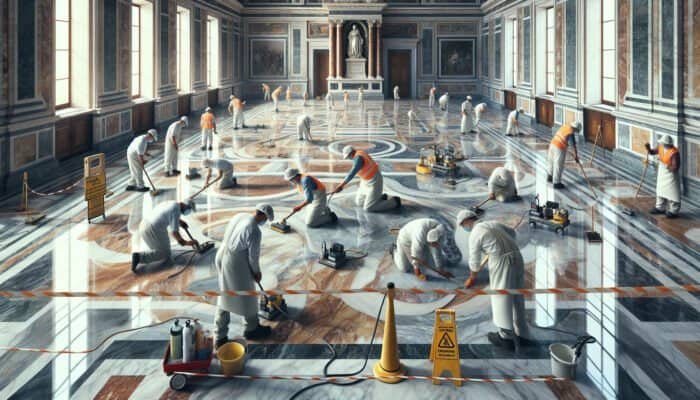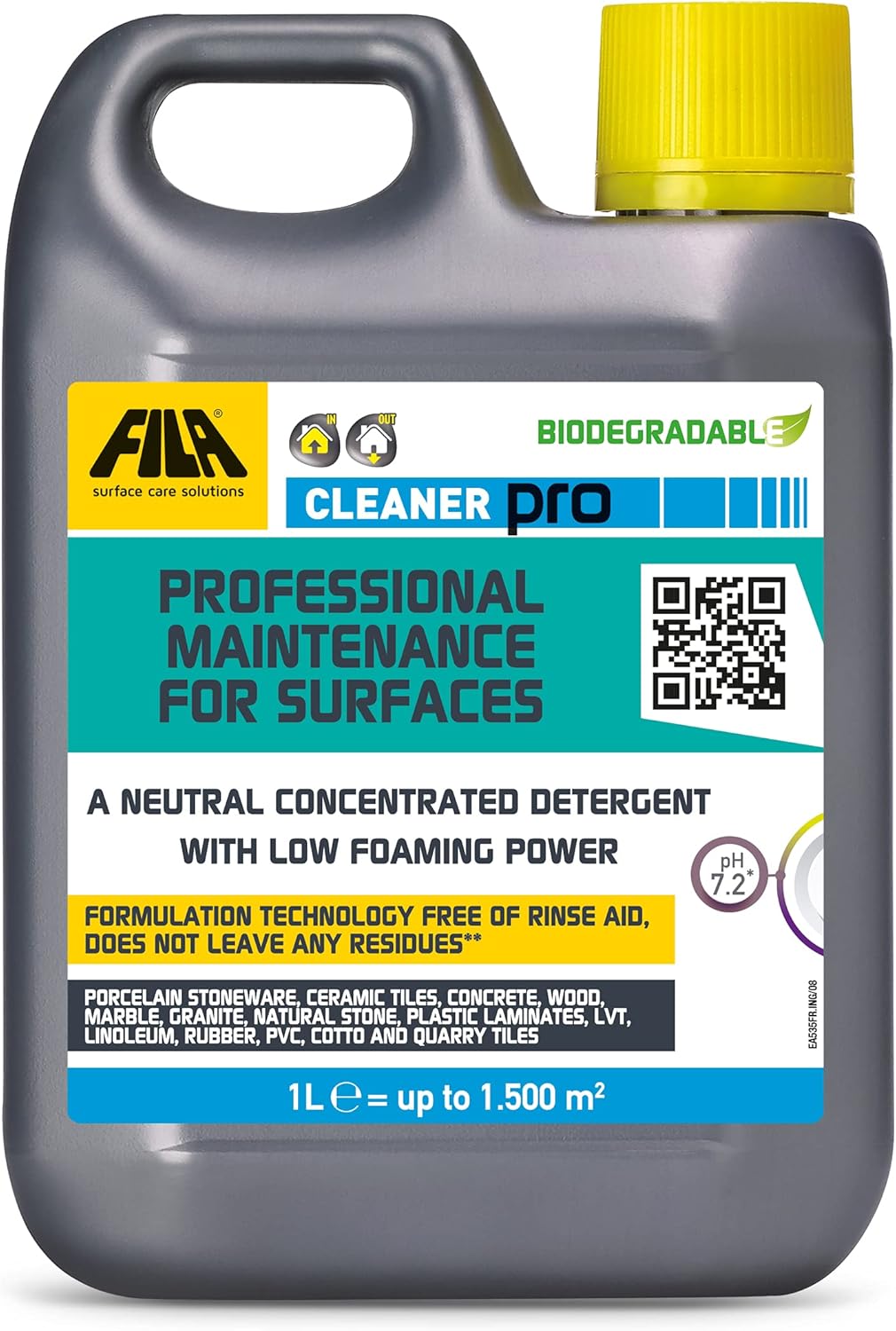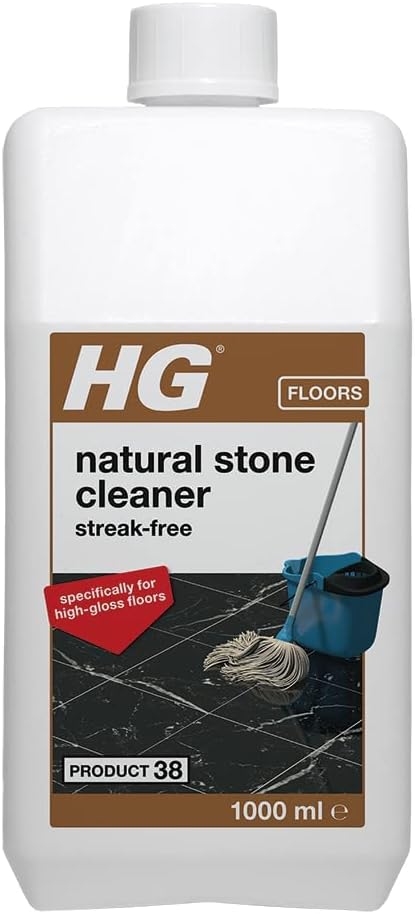Discover Exceptional Marble Restoration Techniques in the UK: A Cultural Treasure
Marble, renowned for its sophistication and beauty, holds a crucial place in the architectural history of the United Kingdom. Its historical significance is vividly displayed in a multitude of iconic structures, from grand estates to pivotal public buildings, embodying both aesthetic allure and profound cultural relevance. The restoration of marble in Morden Park exemplifies a steadfast commitment to preserving this invaluable heritage while aligning it with modern standards of usability and accessibility. By exploring the vital role of marble restoration across the UK, we uncover its rich historical context, identify prevalent causes of wear, and delve into the effective strategies employed for its rejuvenation.
Delving into the Historical Importance of Marble in British Architecture

The legacy of marble in the UK spans centuries, with celebrated structures such as the British Museum and Westminster Abbey showcasing its timeless elegance. These buildings not only reflect the artistic achievements of their respective eras but also act as vital connections to our national heritage. The intricate designs and exceptional craftsmanship evident in marble installations narrate a tale of historical significance and underscore the importance placed on both durability and visual appeal. Hence, marble restoration transcends mere maintenance; it embodies a dedication to conserving our collective history. Each restoration initiative contributes to the rich tapestry of our cultural legacy, enabling future generations to appreciate the artistry and historical significance woven into these magnificent surfaces.
Identifying the Key Factors Contributing to Marble Damage
Across the UK, marble floors encounter numerous challenges that lead to their degradation. For example, weathering can result in substantial surface wear, particularly in areas subjected to severe environmental conditions. Rainfall, coupled with the corrosive impact of pollution, intensifies this erosion process, causing both discolouration and structural vulnerabilities. Furthermore, high-traffic zones frequently endure scratches and scuffs, compromising the marble’s reflective finish. Acknowledging these common causes of damage is essential for successful restoration. By recognising that the revitalisation of marble must address both aesthetic and structural concerns, restoration experts can devise comprehensive strategies tailored to tackle specific forms of damage and restore the marble's magnificence.
Exploring the Diverse Techniques for Marble Restoration
The array of methods employed in marble restoration throughout the UK is both varied and highly specialised. The initial phase usually involves an extensive cleaning process, utilising techniques such as steam cleaning or chemical solutions designed specifically to eliminate stains without harming the marble. Following this, professionals may employ honing methods to smooth the surface and remove superficial scratches. For more profound imperfections, processes like polishing can revive the original shine, restoring the marble's immaculate appearance. In cases of significant damage, such as cracks or chips, epoxy fillers are frequently utilised to repair and restore structural integrity. When meticulously executed, these techniques ensure that the revitalisation of damaged floors meets both aesthetic and functional standards, thereby preserving the elegance and significance of the marble surfaces.
Understanding the Regulatory Framework Governing Marble Restoration

In the UK, the marble restoration process is governed by numerous regulations aimed at maintaining the historical integrity of structures and materials. The Conservation Principles set forth by Historic England provide vital guidance for restoration activities, emphasising the necessity of preserving authenticity and historical significance. Additionally, local planning regulations often stipulate acceptable materials and methods during restoration endeavours. A thorough comprehension of these legal frameworks is essential for restoration firms, ensuring compliance and safeguarding the cultural value of projects like the revitalisation of marble. Adhering to these standards not only protects the materials but also honours the legacy of the sites involved.
Learning from Exemplary Marble Restoration Case Studies
Examining successful marble restoration projects across the UK offers invaluable insights into best practices. A prime illustration is the refurbishment of the marble floors at the Victoria and Albert Museum, where extensive cleaning and precise restoration of intricate designs have resulted in a revitalised allure that captivates visitors. Another noteworthy project is the renovation of the marble entrance at the National Gallery, where specialists skillfully blended traditional methods with contemporary innovations to achieve outstanding outcomes. These case studies underscore the diverse techniques employed and the positive results achieved, highlighting the crucial role of professional expertise in restoring marble.
Pro Tip: Must-Have Products for Daily Marble Maintenance
In-Depth Case Studies of Marble Floor Restoration Projects
Restoration Endeavours at Buckingham Palace: A Case Study

A prime example of successful marble restoration is the ongoing work at Buckingham Palace, where the marble floors demand continual maintenance due to their historical significance and high levels of foot traffic. The restoration techniques implemented here include comprehensive cleaning to eliminate years of accumulated grime and stains, followed by honing to restore the marble’s surface to its original brilliance. Furthermore, restoration experts face the challenge of preserving the palace’s historical accuracy while seamlessly integrating modern cleaning technologies. By committing to these restoration efforts, Buckingham Palace not only maintains its regal appearance but also ensures the safety and comfort of its visitors, serving as a shining example of effective marble restoration.
Maintaining Historical Authenticity at Westminster Abbey
The restoration of marble floors in Westminster Abbey exemplifies a profound commitment to historical authenticity. The Abbey’s significance necessitates meticulous consideration of the restoration methods employed. This project involved extensive research into the original materials and techniques used, ensuring the restoration harmonises with the Abbey’s rich historical narrative. This case illustrates the delicate equilibrium between preserving authenticity and executing restoration tasks. The success of this initiative reinforces the need to restore the marble floors within the broader framework of cultural heritage preservation, reminding us of the imperative to protect our historical landmarks for future generations.
Innovative Restoration Techniques at The British Museum
Within the British Museum, the restoration of marble floors presents unique challenges and opportunities. The museum’s dedication to visitor accessibility requires that restoration efforts be conducted with minimal disruption to guests. Innovative methods, such as employing non-invasive cleaning techniques and temporary flooring solutions, have been effectively adopted to facilitate this process. This strategy ensures that the museum remains operational while its marble floors undergo essential restoration. The British Museum’s initiatives exemplify how the revitalisation of marble can coexist harmoniously with modern public interaction, allowing for both preservation and accessibility within one of the UK’s most cherished cultural institutions.
Crucial Considerations for Choosing the Ideal Marble Restoration Company
Emphasising Accreditation and Proven Expertise
Selecting a reputable restoration company is essential for the success of any marble restoration initiative. Accreditation plays a vital role, as it guarantees that the firm adheres to established industry standards and best practices. In the UK, organisations such as the Stone Federation Great Britain offer accreditation that signifies a company’s dedication to quality and professionalism. Additionally, experience is equally critical; companies with a strong track record in marble restoration possess an in-depth understanding of various marble types and the specific challenges faced in diverse environments. By prioritising accredited and seasoned professionals, clients can ensure that the restoration of the marble is executed to the highest standards.
Evaluating Techniques and Equipment Utilised by Restoration Specialists
When assessing potential restoration companies, it is crucial to scrutinise the methods and equipment they employ. Modern restoration necessitates specialised tools and innovative techniques to achieve optimal results. Companies that invest in advanced equipment, such as diamond polishing pads and cutting-edge cleaning systems, can deliver superior outcomes compared to those relying on outdated methods. This modernisation not only enhances restoration quality but also reduces the risk of potential harm to the marble. Understanding the tools and techniques used by a prospective company ensures that the selected specialists are well-equipped to address the complexities of restoring marble floors at Modern Park, particularly in areas requiring significant attention.
Leveraging Customer Feedback and Case Studies for Informed Decisions
Customer feedback and comprehensive case studies serve as invaluable resources when evaluating the reputation of marble restoration firms. Positive testimonials from previous clients can offer critical insights into both the quality of work and customer service. In addition, thorough case studies documenting specific projects, outlining challenges faced and solutions implemented, can effectively showcase a company's capabilities. By examining these elements, clients can make informed decisions when selecting a restoration partner, ensuring that their project receives the expertise and attention it deserves. This diligence is especially crucial for significant projects, such as the revitalisation of Marble in Modern Park, where the stakes are high.
Evaluating the Financial Aspects of Marble Restoration
Key Factors Influencing Restoration Costs
Gaining a clear understanding of the various factors that influence the costs associated with marble restoration is essential for effective financial planning. The extent of damage is a primary consideration; basic cleaning and honing are generally less expensive than extensive repairs that may involve replacing damaged sections. Moreover, the geographical location of the project within the UK can significantly affect costs due to regional variations in both labour and materials. The type of marble also plays a crucial role; rare or exotic varieties may necessitate specialised care, which can increase overall expenses. By recognising these factors, clients can better prepare financially for the revitalisation of Marble Morden Park, ensuring they allocate sufficient resources to achieve the desired outcomes.
Strategic Financial Planning for Restoration Endeavours
Developing a budget for marble restoration projects requires careful planning and a thorough assessment of potential costs. Start by obtaining quotes from multiple restoration companies, ensuring you receive a detailed breakdown of the services they offer. This transparency facilitates accurate comparisons and helps identify any hidden costs. It is also prudent to establish a contingency fund within your budget to accommodate unexpected challenges that may arise during the restoration process. By proactively budgeting for the revitalisation of Marble Morden Park, clients can minimise financial surprises, contributing to a smoother restoration experience.
Assessing Cost Versus Value in Restoration Investments
When contemplating the financial ramifications of marble restoration, it is crucial to assess the investment relative to the value it adds to the property. Restored marble floors not only enhance the visual appeal of a space but also significantly increase its overall value. Properly executed restoration can boost a property’s desirability, making it a worthwhile investment for both homeowners and business operators. Furthermore, the long-term benefits of maintaining marble surfaces through restoration, as opposed to neglecting them, can result in substantial savings by preventing further damage that would require costly repairs. This cost-versus-value analysis is particularly pertinent for significant projects, such as the revitalisation of Marble in Modern Park, where the advantages can greatly outweigh the initial costs.
Protecting Marble Beauty After Restoration for Longevity
Establishing Consistent Cleaning Routines
After the successful restoration of marble floors, establishing a regular cleaning regimen is crucial for maintaining their beauty and durability. Consistent maintenance should involve the use of gentle, pH-neutral cleaning solutions specifically formulated for marble, avoiding harsh chemicals that could potentially harm the surface. Daily sweeping or dust mopping is essential in preventing dirt and debris from scratching the marble, while periodic deep cleaning can rejuvenate its appearance. By implementing these regular cleaning routines, property owners not only safeguard the results of the revitalisation of Marble in Modern Park but also enhance the overall aesthetic appeal of the area.
Employing Preventive Strategies to Shield Marble
Implementing preventive measures is vital for protecting marble floors from future damage. Applying protective coatings or sealants can establish a barrier against stains, moisture, and dirt, effectively shielding the surface from these harmful elements. Furthermore, strategically placing mats at entrances and high-traffic areas can significantly reduce the amount of grit and grime that comes into contact with the marble. Educating residents and visitors about best practices, such as using coasters for beverages and promptly addressing spills, further contributes to the longevity of the marble. By adopting these preventive strategies, the risk of damage is minimised, ensuring that the revitalisation of the marble in Modern Park remains intact for years to come.
Investing in Professional Maintenance Solutions
Engaging professional maintenance services can be a prudent investment for the ongoing care of restored marble floors. These specialists possess the expertise and knowledge required to perform routine maintenance tasks, such as polishing and sealing, to keep the marble in immaculate condition. They also provide valuable insights into the specific needs of each marble type and the environment in which it resides, ensuring that tailored care is delivered. By utilising professional services, property owners can enhance the effectiveness of their maintenance efforts and extend the lifespan of their marble floors, making it an essential component of preserving Marble in Modern Park.
Conducting Regular Inspections for Proactive Maintenance
Performing routine inspections of restored marble floors is essential for identifying potential issues before they escalate into more significant challenges. Regular assessments enable professionals to evaluate the marble's condition, spotting any signs of wear, discolouration, or damage. This proactive approach facilitates timely interventions, thereby preserving the integrity of the restoration work. Additionally, routine inspections can provide invaluable feedback on the effectiveness of cleaning and maintenance practices, allowing for necessary adjustments. By prioritising regular inspections, property owners can ensure that the revitalisation of Marble in Modern Park continues to yield excellent results long after the initial work has been completed.
Understanding Repair and Restoration Techniques
In the event of future damage, possessing a solid understanding of effective repair and restoration techniques is essential for maintaining the marble’s original appearance. Techniques such as filling cracks with epoxy, re-polishing dulled areas, and re-honing surfaces can restore the marble to its former grandeur. It is crucial for property owners to familiarise themselves with these methods and to enlist professionals capable of executing them proficiently. Prompt action in addressing damage not only preserves aesthetic appeal but also prevents further deterioration, ensuring that the revitalisation of Marble in Modern Park remains a source of pride for years to come.
Assessing the Environmental Impact of Marble Restoration
Integrating Sustainable Practices into Restoration Efforts
The importance of sustainability in marble restoration is increasingly recognised in the UK. Numerous restoration companies are now adopting eco-friendly practices, such as using biodegradable cleaning agents and sustainable materials throughout the restoration process. These environmentally responsible approaches not only help maintain the marble's integrity but also diminish the ecological footprint of restoration projects. For instance, implementing water-efficient cleaning methods reduces water consumption during the revitalisation of Marble in Morden Park, aligning with broader sustainability objectives in the UK. By prioritising these eco-conscious practices, the marble restoration industry can make a positive contribution to environmental conservation.
Implementing Responsible Waste Management Strategies
Effective waste management is an essential component of any restoration project. Restoration companies in the UK are increasingly adopting strategies to minimise the waste produced during marble restoration. This includes recycling materials whenever possible and ensuring hazardous waste is disposed of following local regulations. By actively managing waste, these companies not only promote environmental sustainability but also enhance their reputation among eco-conscious clients. A commitment to responsible waste management practices is vital for preserving the integrity of projects like the revitalisation of Marble in Morden Park, ensuring they leave a minimal environmental footprint.
Addressing Carbon Emissions in Restoration Processes
The carbon footprint associated with marble restoration activities is a critical consideration in today's environmentally aware climate. Restoration companies in the UK are exploring various strategies to reduce their carbon emissions, such as employing energy-efficient machinery and sourcing local materials, which lessens transportation-related emissions. Additionally, incorporating green technologies can further mitigate environmental impact. By actively addressing carbon emissions, these firms contribute to a more sustainable future while enhancing their service appeal. This focus on minimising carbon footprint is particularly relevant for extensive projects, such as the revitalisation of Marble in Morden Park, where environmental implications can be considerable.
Minimising Water Consumption in Restoration Techniques
Water usage is another crucial factor in assessing the environmental impact of marble restoration. Companies are increasingly adopting strategies to reduce water consumption during cleaning and restoration processes. Techniques such as steam cleaning require less water than traditional methods while achieving effective results that do not compromise the marble. Implementing water-saving technologies can significantly contribute to reducing overall consumption and enhancing sustainability efforts. For the revitalisation of Marble in Morden Park, minimising water usage not only conserves this precious resource but also aligns with broader environmental goals in the UK.
Protecting Local Biodiversity During Restoration Activities
The effects of marble restoration projects on local ecosystems and biodiversity are often overlooked. Restoration activities that involve outdoor marble installations must consider the potential impacts on surrounding flora and fauna. To mitigate negative outcomes, restoration companies are increasingly adopting eco-friendly practices that safeguard local ecosystems. By implementing responsible strategies, such as using non-toxic materials and preserving natural habitats during restoration, these companies ensure that the revitalisation of Marble in Morden Park aligns with biodiversity conservation initiatives. This holistic approach contributes to the sustainability of both the restoration sector and the environment.
Anticipating Future Trends in Marble Restoration
Leveraging Technological Innovations in Restoration Practices
The future of marble restoration in the UK is set to benefit immensely from rapid advancements in technology. Emerging innovations, such as 3D scanning and artificial intelligence, are beginning to transform restoration practices. These developments enable restoration professionals to assess damage with greater precision and devise tailored restoration plans that optimise results. Moreover, advancements in cleaning technology, such as automated cleaning systems, are streamlining the upkeep of marble surfaces. As these technologies gain wider acceptance, they promise to enhance the efficiency and accuracy of restoring marble in Modern Park, ushering in a new era for the industry.
Striking a Balance Between Preservation and Modernisation in Restoration Practices
A significant dialogue within the marble restoration community revolves around achieving the right equilibrium between preservation and modernisation. As restoration methods evolve, there is a growing temptation to incorporate contemporary elements that may compromise historical authenticity. The challenge lies in discovering innovative solutions that honour the original design while embracing modern functionality. This discourse is particularly relevant to projects like the revitalisation of Marble in Morden Park, where professionals must carefully navigate the fine line between preserving heritage and introducing modern enhancements. Achieving this balance is crucial for maintaining the integrity of historical sites while ensuring their relevance in today's context.
Enhancing Training and Education for Restoration Professionals
As the marble restoration industry continues to expand, the significance of training and education for professionals cannot be overstated. Advanced training programmes and workshops focusing on contemporary restoration techniques, materials, and technologies are essential for equipping professionals with the skills necessary to tackle modern challenges. Educational initiatives, such as partnerships with universities and industry organisations, can cultivate a new generation of skilled restorers dedicated to excellence. Ensuring that professionals remain informed about evolving practices will ultimately enhance project quality, such as the revitalisation of marble in Modern Park, benefiting the industry as a whole.
Prioritising Sustainable Practices in Future Restoration Projects
As we look to the future, sustainability will increasingly shape the marble restoration landscape. The industry is likely to witness a growing emphasis on eco-friendly practices, encompassing everything from materials utilised to techniques employed. Restoration firms that adopt sustainable methodologies will not only attract environmentally conscious consumers but also contribute to broader ecological objectives. This commitment to sustainability is especially pertinent for significant projects, such as the revitalisation of Marble in Morden Park, where the preservation of both heritage and the environment is of utmost importance. As these trends evolve, the marble restoration sector will position itself as a leader in sustainable practices.
Addressing Frequently Asked Questions About Marble Restoration
What does marble restoration entail?
Marble restoration involves repairing, cleaning, and polishing marble surfaces to restore their original beauty and functionality, frequently addressing damage caused by wear and tear.
Why is marble restoration important?
Restoration is essential for maintaining the aesthetic and structural integrity of marble, preserving its historical value and extending its lifespan.
How can I protect my marble floors from damage?
Regular cleaning, applying protective coatings, and avoiding harsh chemicals can aid in preventing damage to marble floors.
What techniques are commonly utilised in marble restoration?
Common techniques encompass cleaning, honing, polishing, and repairing cracks or chips using epoxy fillers.
What costs are associated with marble restoration?
Costs vary based on the extent of damage, the type of marble, and the geographical location, with minor repairs generally being less expensive than extensive restoration projects.
How long does the marble restoration process usually take?
The duration of marble restoration can vary significantly, from a few hours for simple cleaning to several days for comprehensive restoration efforts.
Can I carry out marble restoration on my own?
While homeowners can manage minor cleaning tasks, professional restoration is recommended for significant damage to ensure quality outcomes.
What should I consider when choosing a restoration company?
Select a company with proper accreditation, extensive experience in marble restoration, and positive customer feedback to guarantee quality work.
How often should I have my marble floors restored?
The frequency depends on foot traffic and wear; however, evaluating marble floors annually can help determine when restoration is necessary.
What sustainable practices are implemented in marble restoration?
Sustainable practices include the use of eco-friendly cleaning agents, minimising water usage, and responsibly managing waste generated during the restoration process.
The post Restoration of Marble In Morden Park for Damaged Floors appeared first on https://tilecleaningsurrey.co.uk
The Article Marble Restoration for Damaged Floors in Morden Park appeared first on https://fabritec.org
The Article Marble Restoration Services for Morden Park’s Damaged Floors Was Found On https://limitsofstrategy.com




